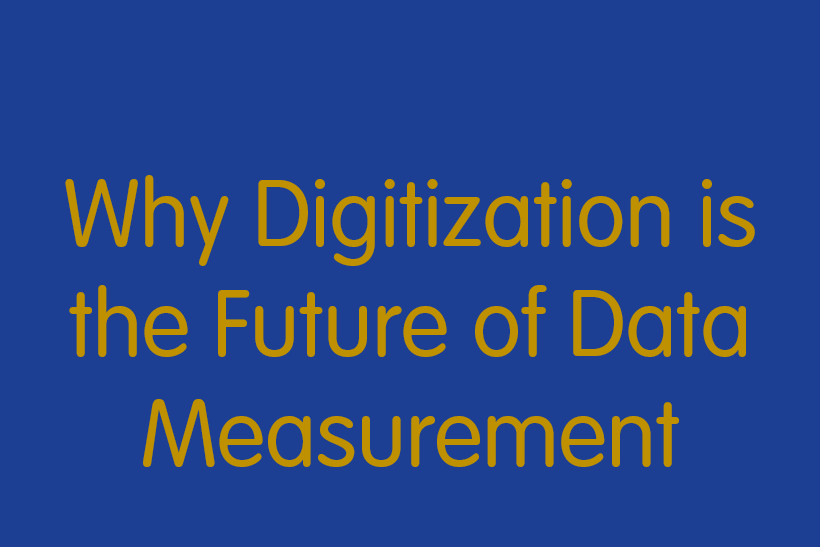Why Digitization is the Future of Data Measurement

Sponsored Content:
In this guest article, Brian Shannon, Principal Business Process Management Strategist at Dolphin, an SAP solutions provider, explores how digitization is helping organizations streamline processes and unlock information for stronger decision-making.
To make informed business decisions, enhance processes, and drive continuous improvement, companies implement – and continually monitor – internal and external metrics. However, many KPIs and benchmarks cannot be measured with current manual processes, because manual work is so difficult to monitor.
So how can businesses gain the transparency and data needed to accurately measure process efficiency and effectiveness?
The Importance of Digitization
With digitization, a finance department can automate manual processes to significantly reduce the average invoice processing time and increase the potential to capture early payment discounts. This makes it possible to capture data points along the entire process lifecycle, which can be used to identify areas for process improvements, remedy existing problems, and help curb delays at each step.
From Metrics to Meaningful Information
The metrics that are possible with digitization can be used to measure both the efficiency and the effectiveness of the business. By transforming metrics into usable information, businesses can deliver repeatable, time-saving processes that improve revenue growth and cost savings. GPOs can utilize relevant metrics to deliver not only faster service, but better service to their vendors and customers. Once a baseline is established, GPOs can then methodically evolve their processes for maximum improvement across the organization. For example, digitizing financial processes will help answer important questions, such as “what percentage of discounts were captured or lost?” and “why were those discounts lost?” Digitization allows us to expand our metrics beyond measures of volume and speed, to understanding why the organization is successful or not successful.
When digitized processes are further enhanced with mobile and an Internet of Things (IoT), it’s possible to collect even more data and gain even greater insight into business processes. Both corporate and back office users can see exactly where an invoice is, along with the entire historical trail of activity. This is particularly useful in today’s distributed global organizations which need to ensure that financial processes are in compliance with corporate and regulatory policies and want to benchmark productivity and profitability within the organization and against key competitors.
Benchmarking and KPIs
Once an organization embraces digitization, the advanced ability to benchmark and determine key metrics will help transform current operations and ensure behavior aligns with the company’s goals. When determining benchmarks and KPIs, remember: the desired outcome is improved operations. Modern metrics to measure and track invoice processing activity include discounts captured, auto-post rates, cycle time analysis, exception analysis, workload trending, early payment and more. Continuous monitoring of these metrics will ensure operations are sustainable, predictable and profitable. Any variances that occur can then be identified and corrected in a timely manner to minimize effect and cost. This recurrent comparison will increase understanding of where the business stands and where it can improve.
These metrics should also be designed to improve accuracy, speed and transparency. In a finance department, processing delays lead to duplicate invoices, rework and missed cash discount opportunities. Incorrect postings lead to duplicate payments and excessive rework. The overall lack of visibility into process status results in lack of control, and cash flow forecasting becomes difficult. Through benchmarks and KPIs, organizations can streamline processes and maintain a strong competitive advantage. This in-depth measurement isn’t possible without digitization.
The Future of Benchmarking
Think about how easy it is for you, as a consumer, to track the progress of a package online. Is your organization able to provide this kind of visibility into your internal business processes? If not, it’s time to digitize your processes, so that you can start measuring and improving them. However, it is only by continually reviewing metrics and performing regular benchmarking that organizations will be able to ensure that the business changes are successfully managed. Ensure a process is in place to maintain process change over time and add new analytics and business tactics as needed. Businesses must be able to adapt metrics and benchmarks as processes evolve, to identify future areas of improvement and for accelerating innovation and growth.
For further information, visit www.dolphin-corp.com or contact Brian Shannon by emailing brian.shannon@dolphin-corp.com
About the Author:
Brian Shannon is Principal Business Process Management Strategist for Dolphin Enterprise Solutions Corporation. He focuses on transforming business processes with smart, adaptable and proven solutions to help businesses maximize return on investment. Shannon has more than 15 years of SAP experience, and his background includes thought leadership, knowledge management, project management, training and SAP consulting. He earned a Bachelor of Arts in Political Science from the University of Manitoba, and an MBA in International Finance from the University of South Florida. For more information, visit www.dolphin-corp.com.
